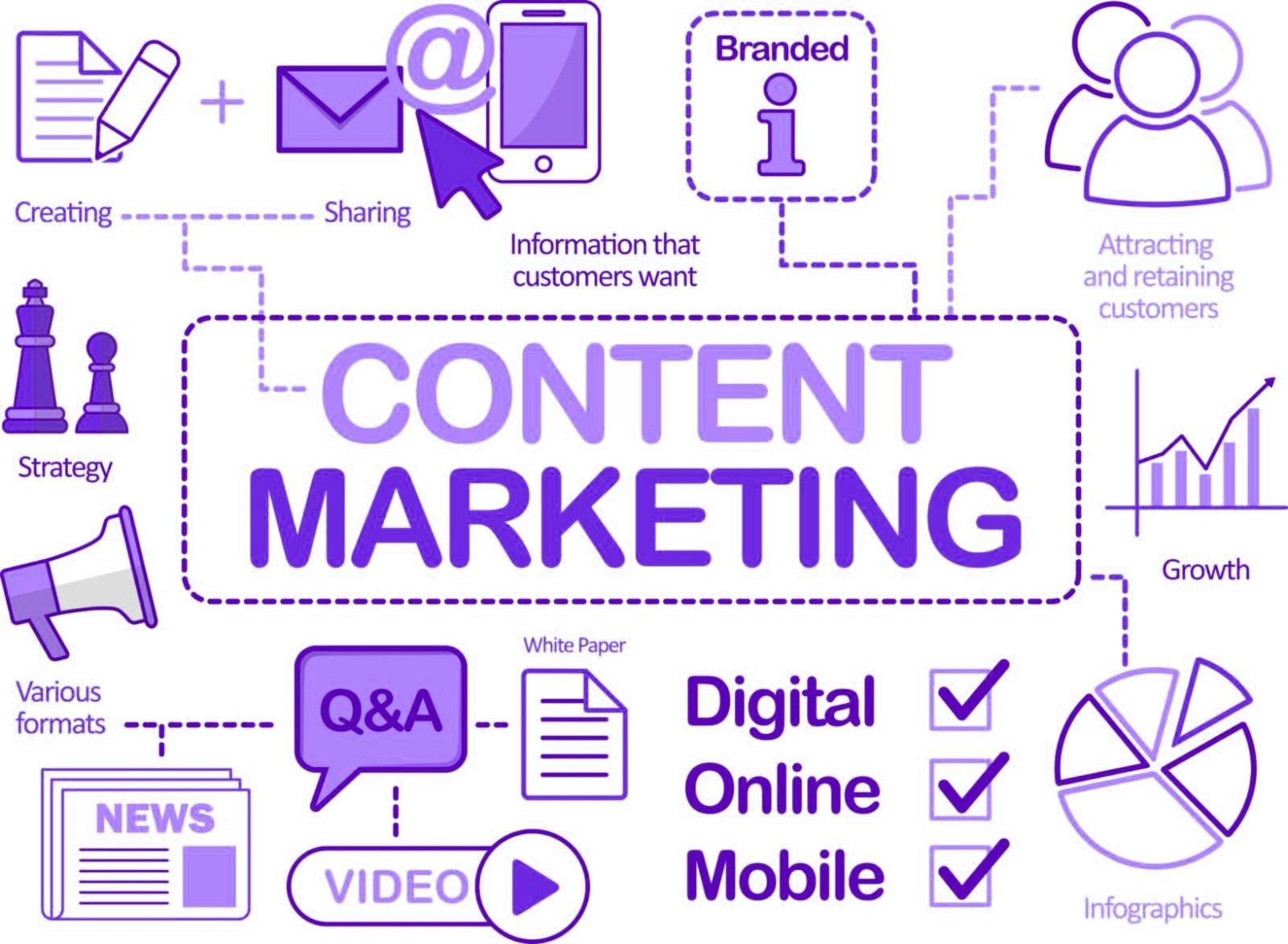The Ultimate Guide to Content Marketing
The Ultimate Guide to Content Marketing: Building Authority and Driving Engagement
In the rapidly evolving world of digital marketing, content marketing has become a cornerstone strategy for businesses looking to build authority, drive engagement, and boost visibility. Whether you’re running a small startup or managing a large brand, the right content marketing strategy can transform your online presence and help you connect with your audience in meaningful ways.
This article will provide a comprehensive look at what content marketing is, why it’s important, and how to optimize your strategy, including the debate on whether to focus on your own blog or publish on high-authority platforms. We’ll cover key insights from our conversation about combining strategies for maximum impact, ensuring your content reaches the widest possible audience while building your brand’s long-term authority.
What Is Content Marketing?
Content marketing is a strategic approach focused on creating and distributing valuable, relevant, and consistent content to attract and engage a specific audience. Unlike traditional advertising, which pushes products or services directly, content marketing is about offering helpful or entertaining content that builds trust and nurtures relationships with potential customers.
For example, a business selling eco-friendly products might produce blog posts on sustainable living, offer how-to guides on reducing energy consumption, or create engaging videos about climate change. The goal isn’t to sell immediately but to educate, inform, or entertain—and ultimately to guide users toward making a purchase decision.
The Components of a Successful Content Marketing Strategy
A well-planned content marketing strategy involves several key components, including understanding your target audience, producing valuable content, distributing it effectively, and measuring success. Let’s explore these in more detail.
1. Understanding Your Target Audience
Before you begin producing content, it’s essential to understand your audience’s needs, behaviors, and preferences. Content marketing is most effective when it’s tailored to a specific demographic. For example, if you’re targeting eco-conscious consumers, your content should focus on sustainability, eco-friendly tips, and green living.
- Personas: Developing detailed buyer personas helps you create more targeted and relevant content.
- Research: Use surveys, analytics, and social media insights to gather information about your audience’s preferences and behaviors.
2. Producing Valuable Content
Once you know who you’re creating content for, the next step is to produce high-quality material that addresses their needs or solves their problems. Content can take many forms:
- Blog posts (for in-depth information or tutorials)
- Videos (for demonstrations or visual storytelling)
- Infographics (to present complex information in an easy-to-digest format)
- White papers or case studies (to offer industry-specific insights)
The goal is to produce content that offers value. Your audience should walk away feeling more informed, entertained, or inspired, which in turn builds trust in your brand.
3. Distributing Your Content Effectively
Having great content is only part of the equation. You also need to ensure it reaches the right audience. Here are some distribution methods to consider:
- Social media platforms like Facebook, Twitter, LinkedIn, and Instagram
- Email newsletters to your subscriber list
- SEO-optimized blog posts that rank well in search engines like Google
- Paid ads on platforms like Google or social media to reach a larger audience
4. Measuring Success
To understand whether your content marketing strategy is effective, you need to track key metrics. These might include:
- Website traffic: How many people are visiting your blog or website?
- Engagement: Are readers commenting, sharing, or liking your content?
- Lead generation: Are your blog posts leading to email signups or product inquiries?
- Conversion rates: How many people are making a purchase or taking the desired action after consuming your content?
Using tools like Google Analytics or social media insights, you can track these metrics and refine your strategy based on what’s working and what isn’t.
Should You Focus on Your Own Blog or Publish on High-Authority Platforms?
One of the most common questions in content marketing is whether you should concentrate your efforts on your own blog or try to publish guest posts on high-authority platforms. Let’s explore the pros and cons of each approach.
Benefits of Writing on Your Own Blog
- Full Control: When you write on your own blog, you have complete control over your content’s message, design, and calls-to-action (CTAs). You can promote your own products or services as much as you like.
- Long-Term SEO Benefits: Regularly posting valuable content on your blog helps you rank higher in search engines, improving organic traffic over time. Search engines favor websites that are frequently updated with fresh, relevant content.
- Brand Building: Publishing on your blog allows you to develop your unique voice and build a loyal audience. Your readers will become familiar with your style and expertise, which can help build trust and authority.
Challenges of Writing on Your Own Blog
- Traffic Building Takes Time: It can take months or even years to build significant organic traffic to a new blog, especially if you’re starting from scratch.
- Promotion Required: Without promotion (through social media, paid ads, etc.), your content might not get the exposure it needs to gain traction early on.
Benefits of Publishing on High-Authority Platforms
- Immediate Exposure: Publishing articles on high-authority platforms like Medium, LinkedIn, or industry-specific websites gives you access to an established audience. This can drive instant traffic to your site.
- Boosts Credibility and Trust: Being featured on well-known platforms enhances your brand’s credibility and positions you as an expert in your industry.
- Backlinks for SEO: Guest posts on high-authority sites provide backlinks to your blog, which boosts your site’s domain authority. This is a crucial factor in improving your search engine rankings.
Challenges of Publishing on High-Authority Platforms
- Content Restrictions: When you publish on third-party platforms, you may need to conform to their guidelines, which may limit how much you can promote your products or services.
- No Long-Term SEO Benefit for Your Blog: While you may gain backlinks, the primary SEO benefits go to the host platform, not your own blog.
The Best Approach: A Combination Strategy
The ideal approach for most businesses is a hybrid strategy that combines writing on your own blog with guest posting on high-authority platforms. Here’s why:
- Maximize Reach: Guest posting on authoritative sites gives you immediate exposure and drives traffic back to your blog. Meanwhile, your blog builds long-term value by establishing your brand’s voice and increasing your domain authority.
- Build Credibility While Driving Traffic: Publishing on respected platforms boosts your credibility and provides backlinks, while your own blog allows you to engage with your audience on your terms.
- SEO Benefits: The backlinks from high-authority platforms help your blog’s SEO, while regularly updating your own blog with valuable content helps improve its ranking over time.
- Engage Different Audiences: Guest posting allows you to tap into new audiences, while your own blog can serve as a hub for deeper, more specific content related to your services.
How to Implement an Advanced Content Marketing Campaign
An advanced content marketing strategy should use a combination of content formats and distribution channels. For example, if you’re launching a new product like a solar-powered smart thermostat, you could:
- Create educational blog posts on your own site to highlight the benefits of smart home technology.
- Produce engaging video content for social media to demonstrate the product in action.
- Guest post on high-authority platforms to build backlinks and drive traffic to your product page.
- Engage your audience through email campaigns, webinars, and interactive content like eBooks or contests.
By tracking your results, refining your strategy, and maintaining a balance between your blog and external platforms, you can maximize the impact of your content marketing efforts.
Conclusion
In today’s digital landscape, a well-rounded content marketing strategy is essential for building authority, engaging your audience, and improving your online visibility. Whether you focus on your own blog, guest post on high-authority platforms, or combine both approaches, the key is to create valuable, relevant content that resonates with your target audience. By balancing these efforts and leveraging both strategies, you can optimize your content marketing for long-term success.



0 thoughts on “The Ultimate Guide to Content Marketing”